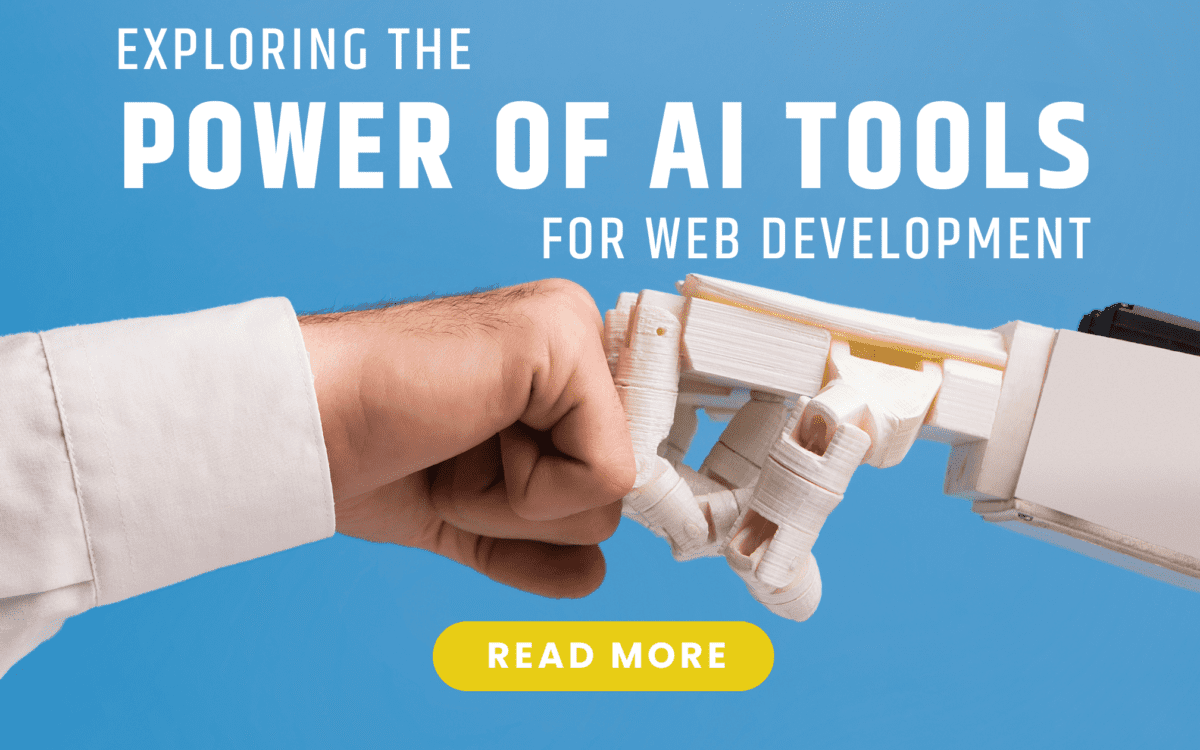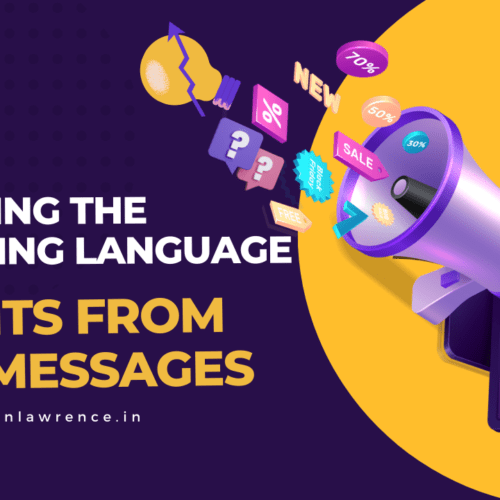Importance of AI Tools for Development
In today's rapidly evolving technological landscape, the integration of Artificial Intelligence (AI) tools into software development processes has become paramount. AI tools offer developers innovative solutions to complex challenges, streamlining workflows, boosting efficiency, and unlocking groundbreaking possibilities. Understanding the significance of AI tools is essential for developers aiming to stay competitive and innovative in their field.
"AI is not just about replacing humans, but augmenting human capabilities." - Sundar Pichai
Demystifying AI Tools for Development
AI tools for development are intelligent software applications that utilize machine learning algorithms to assist developers in various aspects of the software development lifecycle. These tools can automate repetitive tasks, generate code, identify bugs, analyze data, and even predict potential issues, making development faster, more efficient, and less prone to errors.
The evolution of AI in development has been nothing short of revolutionary. From basic code completion to sophisticated code generation and intelligent debugging, AI tools are constantly evolving and transforming the development landscape.
AI’s Real-World Impact Beyond Code
While AI is revolutionizing the development landscape, its impact extends far beyond lines of code. AI tools are making significant waves across various industries, fundamentally changing how we interact with technology in our daily lives. Here are just a few examples, brimming with specific applications:
- Real Estate: Imagine searching for your dream home with the help of a powerful AI assistant:
- Market Trend Analysis: AI can analyze vast amounts of data on property listings, recent sales, and economic indicators to identify trends in pricing, location popularity, and market fluctuations.
- Predictive Property Values: AI algorithms can leverage historical data and market trends to predict future property values, allowing you to make informed investment decisions.
- Streamlined Search Process: AI can personalize your home search by learning your preferences, budget constraints, and desired amenities. It can then recommend listings that perfectly match your needs, saving you valuable time and effort.
- Lifestyle: Our daily lives are increasingly interwoven with AI-powered applications, offering a plethora of benefits:
- Personalized Recommendations: From suggesting movies and music to recommending restaurants and travel destinations, AI can analyze your preferences and past behavior to provide personalized recommendations that enhance your user experience.
- Automated Tasks: AI-powered virtual assistants can automate mundane tasks like scheduling appointments, booking flights, and managing grocery lists, freeing up your time for more important things.
- Enhanced User Experiences: AI is constantly learning and adapting, allowing applications to personalize interfaces, predict your needs, and offer proactive assistance, creating a seamless and intuitive user experience.
- Education Tech: The education sector is experiencing a major shift with the rise of AI tutors, offering innovative learning solutions:
- Personalized Learning Experiences: AI tutors can tailor their teaching approaches to individual student needs. They can identify knowledge gaps through adaptive assessments and adjust lesson plans to ensure students grasp concepts effectively.
- Real-Time Feedback and Support: AI tutors can provide immediate feedback on assignments and quizzes, pinpointing areas where students need extra help and offering personalized support to overcome learning challenges.
- Engaging Learning Environments: AI can create interactive and engaging learning environments that cater to different learning styles. This can include simulations, gamified experiences, and personalized learning paths that keep students motivated and engaged.
- Finance: AI is playing a crucial role in safeguarding the financial sector and streamlining processes:
- Fraud Detection: AI algorithms can analyze financial transactions in real-time to identify suspicious patterns and prevent fraudulent activity, protecting consumers and financial institutions.
- Credit Risk Assessment: AI can analyze financial data to assess creditworthiness more accurately, allowing lenders to make informed decisions and offer personalized loan options.
- Algorithmic Trading: AI algorithms can analyze vast amounts of market data to identify trading opportunities and execute trades with greater speed and precision. This enhances efficiency and reduces the risk of human error in financial markets.
These are just a few examples of how AI is transforming various industries. As AI technology continues to evolve, we can expect to see its influence expand even further, shaping the future of how we live, work, and interact with the world around us. By understanding the diverse applications of AI, developers can gain valuable insights into the potential of this technology and explore ways to integrate it into their own projects. This will allow them to create solutions that cater to the ever-changing needs of various industries and contribute to the ongoing technological revolution.
AI Tool Stacks: Building Your Development Powerhouse
The world of software development is rapidly embracing a powerful new approach: AI tool stacking. This isn't about replacing developers with robots (phew!), but rather about empowering them with a combination of intelligent AI tools. Imagine having a team of AI assistants, each specializing in a different area, working alongside you to streamline your workflow and unlock groundbreaking possibilities. That's the magic of tool stacking.
Building the Right Stack: It All Starts with Your Needs
The key to successful tool stacking lies in understanding your specific project requirements. Just like choosing the right ingredients for a recipe, selecting the most relevant AI tools depends heavily on what you're trying to achieve. Here's what you need to consider:
- Project Goals: Are you building a complex data-driven application? Do you need help with code generation or bug detection? Clearly define your project objectives to identify the functionalities you need most from your AI tools.
- Project Phase: Different phases of development might benefit from different AI tools. For example, during the early stages, you might prioritize tools for brainstorming and code completion. Later stages might require tools for automated testing and performance optimization.
Seamless Integration: Avoiding Data Silos and Workflow Headaches
Once you've identified your project needs, the next step is to choose AI tools that integrate seamlessly with each other. Data silos – where information gets trapped within individual tools – can be a major roadblock to efficient development. Ensure your chosen tools can share data and communicate effectively, creating a smooth workflow where outputs from one tool become inputs for the next.
Here are some tips for ensuring seamless integration:
- Open APIs: Look for tools that offer open APIs (Application Programming Interfaces) that allow for easy data exchange between different platforms.
- Standardized Data Formats: Choose tools that utilize standardized data formats for smoother data transfer and processing.
- Cloud-Based Tools: Cloud-based AI tools often offer better integration capabilities compared to on-premise solutions.
User Experience Matters: Keeping Developers Happy and Productive
Don't underestimate the importance of user experience (UX) when selecting your AI tools. Developers are still the driving force behind successful projects, so it's crucial to choose tools that are intuitive and user-friendly. Here's what to look for:
- Clear and Simple Interfaces: Complex interfaces can lead to frustration and wasted time. Opt for tools with clean interfaces that are easy to navigate and understand.
- Context-Aware Assistance: The best AI tools anticipate your needs and provide relevant suggestions and recommendations based on the task at hand.
- Customization Options: Allowing developers to customize tool settings to their preferences can significantly enhance the overall development experience.
The Diverse Powerhouse of AI Tools: Your Development Allies
Now that you've built your dream AI tool stack, let's explore the diverse functionalities these tools offer to empower developers:
- Data Analysis Powerhouse: AI can analyze vast amounts of data, uncovering hidden patterns, trends, and anomalies that might be missed by the human eye. This provides invaluable insights for decision-making, user behavior analysis, and improving application performance.
- Predictive Modeling: A Glimpse into the Future: AI can be trained to predict future events and outcomes based on historical data and current trends. This allows developers to proactively address potential issues before they arise and make informed decisions about future development directions.
- Automation Heroes: Freeing Up Time for Creative Endeavors: Repetitive tasks like code testing, documentation generation, and data cleaning can be effectively automated using AI tools. This frees up developers' valuable time to focus on more creative and strategic aspects of the development process.
- Personalization Masters: Tailoring Experiences for Every User: AI allows for the personalization of user experiences by dynamically adapting features and functionalities based on individual user preferences and behavior. This can significantly improve user engagement and satisfaction with your application.
By leveraging the power of AI tool stacking, developers are no longer limited by their own skills and knowledge. They can harness the diverse functionalities of AI tools to streamline workflows, boost efficiency, and unlock groundbreaking possibilities. In the ever-evolving world of software development, AI tool stacking is poised to become the standard for building innovative and user-centric applications.
Artificial Intelligence (AI) has transformed the landscape of software development, offering innovative solutions to complex challenges. As developers strive to harness the potential of AI, understanding the top tools in this domain is essential. In this article, we explore some of the most powerful AI tools for development, providing insights into their features, ratings, reviews, and recommendations for developers.
AI Tools You Should Know About: A Developer’s Arsenal
Here are some of the top AI tools for development to consider (VSCode Needed):
Copilot by GitHub
- Features: Real-time code suggestions, context-aware completions, multi-language support.
- Rating: 4.5/5
- Review: Copilot revolutionizes the coding experience with its AI-powered suggestions, helping developers write code faster and more efficiently. The multi-language support ensures compatibility with various programming languages, making it a versatile tool for developers.
- Should You Pay?: Yes, Copilot offers premium features that significantly enhance productivity and code quality.
- Free/Open-Source Alternative: Visual Studio IntelliCode (free tier with some limitations) offers similar code completion features, though not quite as sophisticated as Copilot.
Tabnine
- Pros: Powerful code completion, security-conscious design, integrates with various IDEs.
- Cons: Free tier limitations.
- Rating: 4.3/5
- Review: Tabnine stands out for its advanced code completion capabilities, offering accurate and context-aware suggestions to developers. However, the free tier comes with limitations, making it less suitable for heavy users or larger projects.
- Should You Pay?: Depending on your needs, upgrading to the premium version may be worth considering for access to advanced features and improved performance.
- Free/Open-Source Alternative: AI-Code (https://github.com/topics/ai) is an open-source alternative offering basic code completion functionalities.
DeepCode
- User Experience: User-friendly interface, detailed code analysis reports, actionable recommendations.
- Rating: 4.7/5
- Review: DeepCode excels in providing comprehensive code analysis and actionable insights to developers, enabling them to identify and fix potential issues quickly. The user-friendly interface and detailed reports make it easy to understand and implement recommended changes.
- Should You Pay?: DeepCode offers both free and paid plans, with the premium version unlocking additional features and enhanced analysis capabilities.
- Free/Open-Source Alternative: SonarQube (https://www.sonarsource.com/products/sonarcloud/) is a popular open-source alternative for code quality analysis, though it may not be as user-friendly as DeepCode.
IntelliSense+
- Features: Intelligent code completion, automatic error detection, performance optimization suggestions.
- Rating: 4.6/5
- Review: IntelliSense+ is a must-have tool for developers seeking to streamline their coding workflow. Its intelligent code completion and automatic error detection capabilities significantly improve productivity and code quality. The performance optimization suggestions help developers write more efficient and scalable code.
- Should You Pay?: Yes, the premium version of IntelliSense+ offers additional features and performance enhancements that justify the investment for professional developers.
AI for Developers: A Powerful Ally, But Concerns Remain
The world of software development is embracing a revolution powered by Artificial Intelligence (AI). AI tools are transforming workflows, boosting efficiency, and unlocking groundbreaking possibilities. But with this power comes responsibility. Before diving headfirst into the world of AI development, it's crucial to address some key concerns:
Privacy, Security, and Ethics: The Three Pillars of Responsible AI
- Privacy: In today's data-driven world, privacy is paramount. When using AI tools, ensure they adhere to data privacy regulations like GDPR (General Data Protection Regulation) and CCPA (California Consumer Privacy Act). User data should be collected, stored, and processed responsibly, with clear user consent and robust security measures in place.
- Security: AI tools often handle sensitive information, so robust security features are essential. Look for tools with secure access controls, encryption protocols, and regular security updates to safeguard your data from unauthorized access and potential breaches.
- Ethical Considerations: AI algorithms are only as good as the data they're trained on. Biases can creep in, leading to discriminatory or unfair outcomes. Be mindful of potential biases in your chosen AI tools and development practices. Advocate for fair and responsible AI development that benefits everyone.
By prioritizing these three pillars – privacy, security, and ethics – you can ensure that your AI-powered development projects are not just powerful, but also responsible and ethical.
Overcoming Roadblocks on the Path to AI Adoption
The road to AI adoption isn't always smooth. Here are some common roadblocks and strategies to overcome them:
- Lack of Awareness: Not everyone on your development team might be familiar with AI tools and their capabilities. Educate your team through workshops, demonstrations, and internal knowledge-sharing sessions. Highlight the benefits of AI tools and how they can empower developers in their daily tasks.
- Integration Challenges: Integrating new tools into existing workflows can be tricky. Ensure the AI tools you choose integrate seamlessly with your development environment and existing tools. This will minimize disruptions and ensure a smooth transition for your team.
- Data Limitations: AI thrives on high-quality, well-structured data. Limited or messy data can hinder the performance of AI tools. Before implementing AI, assess your data landscape and invest in data cleansing and labeling efforts if necessary.
Building a Smooth Path Forward: Strategies for Success
Here are some key strategies to ensure successful AI implementation in your development projects:
- Start Small: Don't try to overhaul your entire development process overnight. Instead, begin with pilot projects that focus on specific tasks or functionalities. This allows you to gain experience, identify potential challenges, and build confidence before scaling up.
- Invest in Training: Equipping your development team with the knowledge and skills to use AI tools effectively is crucial. Provide training on specific AI tools, best practices for AI development, and how to interpret and utilize the outputs of AI models.
- Seek Expert Guidance: If you're unsure about where to start, consider consulting with AI specialists. They can provide valuable expertise on selecting the right tools, integrating them into your workflow, and ensuring successful implementation of AI in your development projects.
By addressing these concerns and roadblocks, you can harness the transformative power of AI while fostering a responsible and ethical development environment. Remember, AI is a powerful tool, but it's the developers who wield it who ultimately determine its impact on the world. So, embrace the future of AI development, but do so with a critical and responsible eye.
Calculating ROI for AI Tool Investments
When evaluating the ROI of AI tool investments, it's essential to consider both tangible and intangible benefits:
Tangible Benefits
- Increased Productivity: Measure the efficiency gains achieved through automation and optimization of development processes.
- Cost Savings: Quantify the reduction in operational costs, such as labor expenses and resource utilization.
Intangible Benefits
- Improved Decision-Making: Assess the impact of AI tools on enhancing decision-making processes through data-driven insights.
- Innovation: Evaluate the contribution of AI tools in fostering innovation and driving competitive advantage.
To calculate ROI effectively, organizations should track key metrics such as:
- Time Saved: Quantify the reduction in time spent on repetitive tasks or manual processes.
- Error Reduction: Measure the decrease in errors or defects resulting from the implementation of AI tools.
- Revenue Impact: Assess the revenue generated or retained as a result of improved products or services.
Optimizing Returns through Effective Utilization
Once the ROI is calculated, the focus shifts to optimizing returns through strategic utilization of AI tools. Here are some strategies to consider:
Clearly Define Goals
- Alignment: Ensure that the usage of AI tools aligns with the organization's overall development objectives and strategic priorities.
- Specificity: Define clear and measurable goals to track progress and evaluate the effectiveness of AI implementations.
Monitor and Adapt
- Continuous Evaluation: Regularly monitor performance metrics and KPIs to identify areas for improvement and optimization.
- Agile Approach: Adopt an agile mindset, allowing for flexibility and adaptation to changing requirements and market dynamics.
Foster a Culture of Innovation
- Encourage Experimentation: Create a supportive environment that encourages developers to experiment with new AI applications and technologies.
- Continuous Learning: Provide opportunities for ongoing training and skill development to keep pace with advancements in AI and machine learning.
Frequently Asked Questions (FAQs)
Here are answers to some of the most common questions regarding AI tools for development:
What are AI tools for development?
As discussed earlier, AI tools for development are intelligent software applications that leverage machine learning algorithms to assist developers in various aspects of the software development lifecycle. These tools can automate repetitive tasks, generate code, identify bugs, analyze data, and even predict potential issues.
How do AI tools benefit various industries?
The benefits of AI tools extend far beyond the realm of software development. Here are some examples across different industries:
- Healthcare: AI assists in medical diagnosis, drug discovery, and personalized treatment plans.
- Manufacturing: AI optimizes production processes, predicts equipment failures, and improves quality control.
- Retail: AI personalizes product recommendations, automates customer service interactions, and analyzes customer behavior for targeted marketing strategies.
- What factors should be considered when selecting AI tools?
Here are some key factors to consider when choosing AI tools for development:
- Project requirements: Identify your specific needs and challenges to select tools that address them effectively.
- Tool functionalities: Evaluate the features and functionalities offered by different tools and ensure they align with your project goals.
- Budget: Consider the cost of the tools and choose options that fit your budget constraints.
- Ease of use: Select tools with user-friendly interfaces and intuitive workflows to minimize the learning curve for your developers.
- Security and privacy: Choose tools with robust security measures and ensure they comply with relevant data privacy regulations.
- How can businesses overcome challenges in implementing AI tools?
Several challenges can arise during AI tool implementation. Here's how to overcome them:
- Lack of awareness: Educate your team on the benefits and functionalities of AI tools to foster adoption and enthusiasm.
- Data limitations: Ensure access to high-quality, well-structured data for optimal AI performance. Consider data cleansing and labeling efforts if necessary.
- Integration challenges: Plan for smooth integration with existing development workflows and tools to avoid disruptions.
- Talent gap: Upskill your development team or consider hiring AI specialists to bridge the knowledge gap.
- What are the future prospects of AI in development?
The future of AI in development is incredibly promising. Here are some exciting possibilities on the horizon:
- More sophisticated code generation: AI tools will be able to generate not just snippets of code but entire functionalities and modules.
- AI-powered debugging: AI will not only identify bugs but also suggest potential fixes and root causes.
- Personalized development environments: AI will personalize developer experiences by tailoring tools and suggestions to individual coding styles and project requirements.
- Democratization of development: AI will make development more accessible by assisting with tasks traditionally requiring extensive coding experience.
By embracing AI tools and staying informed about these advancements, you can position yourself at the forefront of innovative software development.




